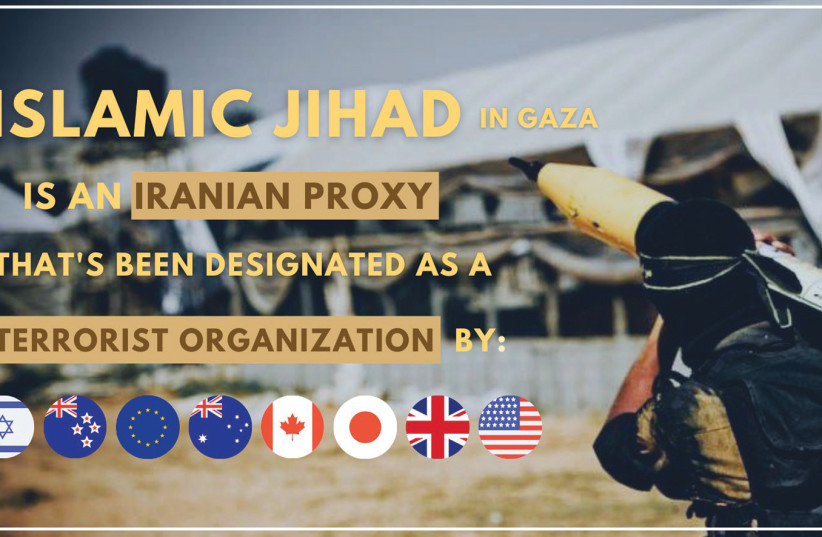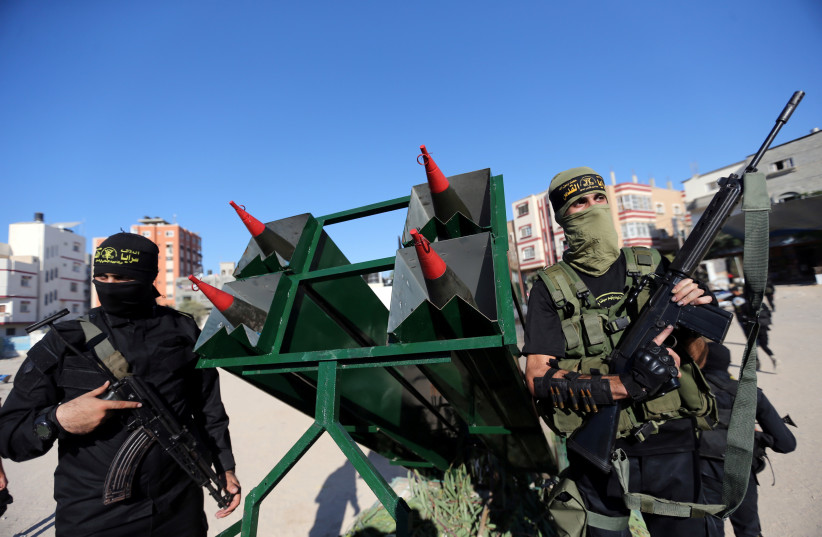With its traditional terrorist foe taking a back seat, the Israeli government needed to explain the dangers presented to its state from scratch.

After decades of casting Hamas as Israel’s main threat in the south, Israel launched its first operation in Gaza against Palestinian Islamic Jihad (PIJ).
This comes with its own challenges on the public diplomacy front. With its traditional terrorist foe taking a back seat, the Israeli government needed to explain the dangers presented to its state from scratch.
Casual observers are largely familiar with the name Hamas, and have associated with it rocket attacks and suicide bombings. Hamas is widely recognized as a brand-name terrorist organization and few see it in a positive light. The evils of Hamas were in mind with every Israeli operation in Gaza, affording some legitimacy to the IDF’s actions.
Until now, international audiences have been far less familiar with PIJ than they have been with Hamas. PIJ doesn’t control the Gaza Strip and without a litany of crimes, the IDF could be granted less leeway by observers in its military actions when engaging with them.
Based on videos put out by the IDF and Foreign Affairs Ministry, Israel chose to brand PIJ as the illegitimate proxy of a hostile foreign nation, akin to Al Qaeda, separate from Palestinians and as much a danger to them as they are to Israelis.

‘Who is the Islamic Jihad in Gaza?’
Four hours prior to the beginning of Operation Breaking Dawn, the ministry released a video explaining PIJ’s background.
“Who is the Islamic Jihad in Gaza?” Asked the video. “A terrorist organization operating under the leadership of Iran,” was the lede.
Graphics published by official Israeli international channels also emphasized the clear connections to Iran.
“They follow an extreme Islamic ideology,” said the August 5, ministry video. “The organization was established as part of a global Jihad phenomenon, which includes Al Qaeda and Hezbollah. The Islamic Jihad in Gaza is a recognized terror organization by the European Union, UK, United States, Japan, Canada and Australia.”
Though it is odd to put Hezbollah and Al Qaeda as part of the same network, the comparison to Al Qaeda seems intentionally salient. On August 2, the US killed Al Qaeda leader Ayman al-Zawahiri in a targeted strike, much in the same fashion as Tayseer Jabari was targeted at the outset of the war. Both were presented as leaders of radical Islamic terrorist organizations responsible for the deaths of civilians.
“We just targeted a senior commander of the Palestinian Islamic Jihad terrorist group in Gaza,” announced the IDF on August 5. “Tayseer Jabari was responsible for multiple terrorist attacks against Israeli civilians.”
Palestinian Islamic Jihad
THROUGHOUT THE Israeli content on the war, “Palestinian” was almost never mentioned in relation to Islamic Jihad – even removing it from the group’s name. With some exceptions, it was almost always referred to as “Islamic Jihad in Gaza,” in the same way one might refer to a branch of Islamic State or Al Qaeda.
The terrorist organization is presented as distinct from Palestinians, likely not only to delegitimize them but to develop a narrative that the military operation would not be against Palestinians but an alien body among them.
“Islamic Jihad in Gaza is solely a military organization, not a governmental movement, and has no intention of leading the Palestinians,” said the initial ministry video.
If Palestinians were mentioned in relation to Islamic Jihad, it was only when noting the danger that the organization presented to them.
“Tonight, Islamic Jihad terrorists fired a rocket towards Israel, which fell short inside Gaza, hitting a Palestinian home in the Jabaliya neighborhood and tragically killing at least four children,” said Prime Minister Office International Spokeswoman Keren Hajioff, on Sunday. “Islamic Jihad is killing Palestinian children in Gaza.”
It is likely that there were at least two other rocket misfires that killed Palestinians and it appears that PIJ killed more Gazan civilians than Israel.
As much as Israel worked to brand Islamic Jihad, the terrorist group played directly into Israel’s messaging with its actions like those in Jabaliya, and Israel was quick to seize on their blunders.
The government and military shared multiple graphics and videos of the incident, and emphasized the phenomenon of rocket misfires in the Gaza Strip. Footage of other rocket misfires, such as those missing a Palestinian news team, were shared via the Israel Twitter account.
These videos gained hundreds of thousands of views all together. This operation, the anti-Israel outrage seemed muted.
PIJ’s actions and Israeli branding seem to have successfully branded the group as a danger to Palestinians. It remains to be seen in future conflicts if they were successful in establishing Islamic Jihad as a foe that threatens Israel, as well, and warrants future military action.
The writer is a news desk manager at The Jerusalem Post.